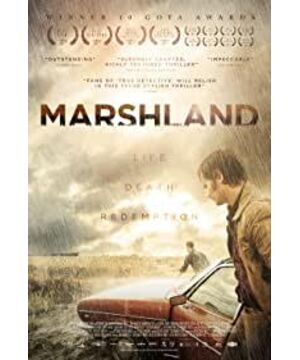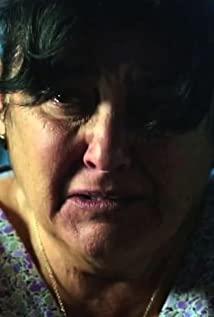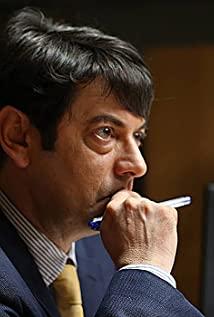"Swampland" is a film about the changes in the living environment of town residents, policemen, entrepreneurs, and workers after the change of political system in the 1880s. It can be said that the whole film uses low-saturation tones, telling the story that this land has not changed for the better, but has become worse.
Time backgroud:
From 1939 to 1975, it was the period of Spanish President Franco's dictatorship. After Franco's death, the ruling power was handed over to Juan Carlos I and the transition to democracy began. During Franco's administration, he supported fascism in World War II, which is why the hotel cross statue is hung with Hitler's portrait in the film. In the film, the old policeman Juan (Juan) is the security policeman during Franco's rule, while Pedro is the opposite.
Some doubtful speculations:
Why do you want to kill a girl? Why tortured them before killing?
answer:
The film uses the subjective perspective of two detectives, so the relationship between Alfonso, Queenie, and Sebastian is not described. Then it is difficult to figure out the story of their murder. But what can be known is that the three of them have a clear leading party, which can be seen from the fact that Zhu An was not killed but was transferred after being stunned.
In addition to 3 people, there were 3 others who participated in the crime or assisted Alfonso to get rid of crime during the detection process:
- 1. Chief Detective: From the process of arguing between the Chief Detective and Pedro, it can be seen that the Chief Detective is clearly defending Alfonso.
- 2. Jesse (leader): Jesse initially asked for bribes and led the way, but later rejected Juan’s bribes. It can be speculated that he received a larger bribe. Jesse played a key role in capturing Sebastian. From leading the way to the abandoned hut to seeing the escaping vehicle outside the house (when leading the way for the first time, Jesse and the two detectives entered the house together, and it did not rain at that time, and Jesse did not enter the house during the second lead, and still did not enter the house because of heavy rain outside the house. , It can be inferred that Jesse’s task is to tell the two of them to run away from the vehicle. As for why the vehicle happened to appear and pass by the hut, it’s a bit too coincidental), and then to the swamp, sink into the quagmire, and guide him on the small road, 3 times Leading the way, and the purpose is so obvious, I have to guess that he went from accidentally entering the case to becoming a part of the case
- 3. Juan: When Juan confronted Sebastian, the opponent had lost his defense, but Juan still stabbed several times until Sebastian was killed (from Juan Hotel to face the former victim Judging from the cold treatment of the boyfriend's communication with the gun, his character is not paranoid and crazy). Such behavior makes people think that Juan has been bought. Once Sebastian died, all the crimes could be blamed on him, and Alfonso was naturally covered up.
From the perspective of the two police detectives, the narrative is inevitably the same as the two humans. The viewing process is like a repressive soundtrack, such as humid weather with no sunlight. This is not only the style advantage of the film, but also a place that makes people feel puzzled and even criticized.
In the early 1880s, during the official transition period from dictatorship to democracy in Spain, what remains and obstacles did the old dictatorship system have to the democratic transition?
After the new regime took over, this place is still not a democratic country. The voice that needs to be made is buried, not the villagers, but the decision made by the young police. As for the people’s adaptation to the new system, it is more embodied in money or the outside world (the victimized girl and her companions want to leave the village, and the victimized girl’s father steals drugs to buy a car). It can be said that during the process of change, they are hurt by the temptation of desire. Heavier.
Pedro’s transformation happened to reveal the process of human change, from Pedro to being kidding or concealing Juan and Alfonso. Of course, Pedro's predecessor was insufficiently narrated, which made the later transformation seem a bit weak
In the film, the first object communicated by the victim’s sister’s mother, the town’s police, and Jesse is still Alfonso. Only the reporter trusts Pedro enough, and even passes Juan and the photos that indirectly prove Alfonso to Pede. Luo.
Some visual metaphors:
Red: A bird's-eye view of the whole film when it comes out of the scene. The occasional red color is particularly eye-catching. Red represents temptation and death. The phone that appeared on Pedro, the light of a woman passing by, and so on.
The ending of the movie:
The people at the bottom have not escaped this swamp
- The victims failed to wash away their suffering, and the perpetrators did not escape sanctions
- Pedro arrived in Madrid as he wished, but his soul fell into this swamp. Justice has not come, and evil deeds continue.
Extra words:
Knowing that this movie comes from an interview with the director of "Blizzard is Coming". Both films are closely related to the times. "Blizzard is Coming" focuses on individuals and "Swampland" focuses on group portraits. The source of inspiration for this film can be more or less influenced by the "Seven Deadly Sins".
" This world is beautiful and it is worth fighting for. And I only agree with the second half."
View more about Marshland reviews











